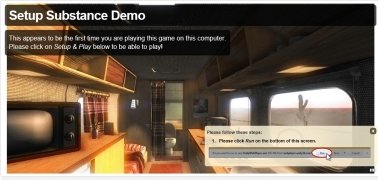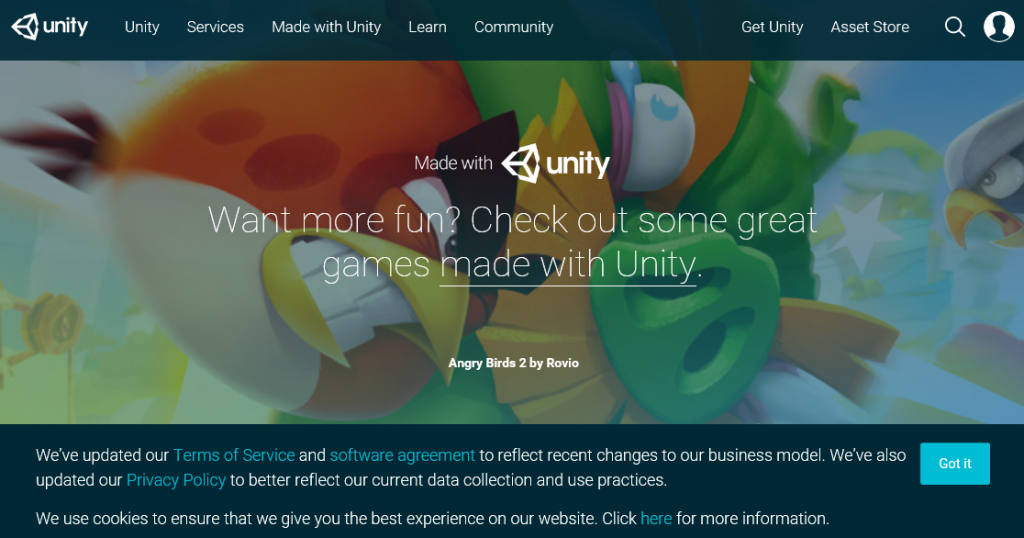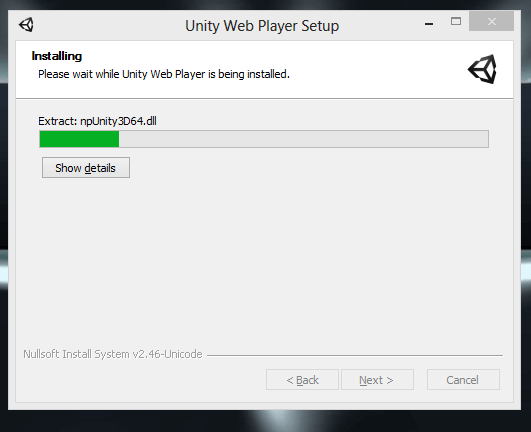

- #UNITY WEB PLAYER COM UPDATE#
- #UNITY WEB PLAYER COM CODE#
- #UNITY WEB PLAYER COM DOWNLOAD#
- #UNITY WEB PLAYER COM WINDOWS#
#UNITY WEB PLAYER COM DOWNLOAD#
For the changeset ID you just found, download these two zips:

Find the Changeset ID at the bottom of the page. For example, for Unity 5.1.5 you would go to. go to to get a list of all the Unity 5.x versionsĢ.
#UNITY WEB PLAYER COM WINDOWS#
Manually getting a new Unity version (method 2):ġ. UnityWebPlayerDevelopment.exe: Development player which runs in Windows Firefox and IE (both 32bit). Then, unzip the 2 files into a folder named according to the Unity version.įor example, for channelName Beta-5.3, you would download these URLs:Īnd you would unzip those files in a folder with this name: Beta-5.35.x.x In each URL below, replace each -win32.zip The demo exploit then parses the list and proceeds to download individual email messages.Manually getting a new Unity version (method 1): The browser loads the target user’s email list (about 12 kB) and posts it back to the attacker. After the application is loaded and the plugin has checked for updates, it accesses a URL on the “attacker site” and gets a 301 redirection to. Tuy nhiên, nu có các iu kin ó và vi h tr ca Unity Web Player, hiu ng game 3D. Yêu cu duy nht khi s dng Unity Web Player ó là máy ca bn cn có cu hình mnh, tc kt ni Internet tt thì mi có th ti game nhanh chóng. The screencap below shows Firefox’s Network Monitor when running our demo exploit. Ti Unity Web Player chi game 3D trên trình duyt d dàng. However, Unity Web Player allows the redirect because it erroneously bases its evaluation on the user:password part of the URL which is identical in both URLs (“x:y”). Unity Web Player and browser communication The HTML page that contains Unity Web Player content can communicate with that content and vice versa.
#UNITY WEB PLAYER COM CODE#
which could return a HTTP redirect status code (301, 302, 307) and a Location: header pointing at redirect should be denied as it points to a different domain. A malicious app loaded from could access a URL from e.g. These policies can be extended with crossdomain.xml files.Ī specially formatted URL in a HTTP redirection can be used to bypass these restrictions. The Unity Web Player plugin implements the normal cross-domain policies: an application running on a website can only access resources (URLs) on the same website, not other websites nor the local file system. However on Chrome, NPAPI plugins have been disabled by default since version 42 (April 2015). We’ve constructed a Facebook branded Unity Web Player installation flow, showing potential players that Unity Web Player is endorsed by Facebook, a brand they know and trust.Īs an NPAPI plugin, Unity Web Player has been available for all major browsers. One of the initial barriers to entry when using Unity is the installation of the browser Unity Web Player plug-in.

Facebook “endorses” the plugin and has an API for embedding Facebook features in games: In 2013 the company estimated the number of installs as over 200 million. Unity Web Player is a fairly popular plugin. Depending on the web browser and its version, the plugin may or may not start directly without confirmation. The attack can be carried out when the target user views a web page containing the attacker-crafted Unity app. When running on Internet Explorer, it’s also possible to read local files from the target user’s hard disk. For example, the application could download the target user’s private messages from Gmail or Facebook and quietly pass them to the attacker. The Unity Web Player plugin has a vulnerability which allows a malicious Unity application to bypass normal cross-domain policies and access any website with credentials of the current user. One of the target platforms is Unity Web Player, a web browser plugin for Windows and OS X.
#UNITY WEB PLAYER COM UPDATE#
Update 09 June, 2015: There is a new version of the Unity Web Player fixing the issue. Unity Webplayer is no longer actively supported by Unity and is DEPRECATED, which means things like this will occur from time to time and theres no intention of fixing them. If the app is loaded from a URL containing the user:password part, the dotless decimal trick is not required. Update 05 June, 2015: added some details and an online vulnerability test.


 0 kommentar(er)
0 kommentar(er)
